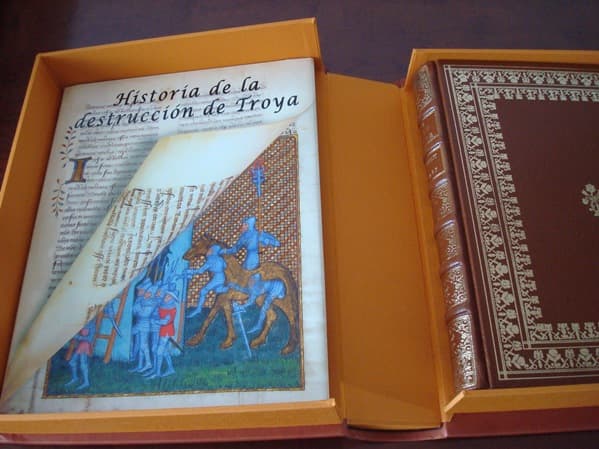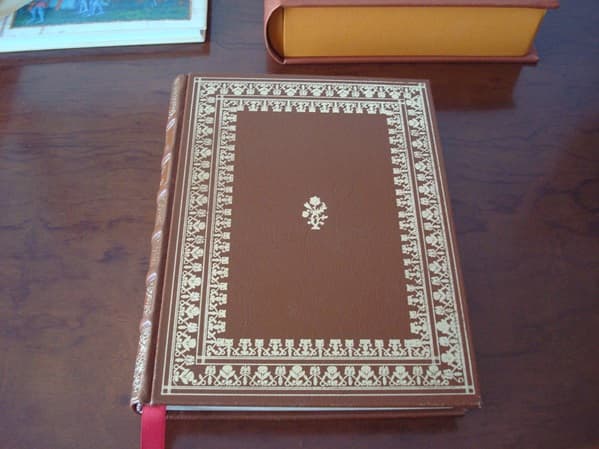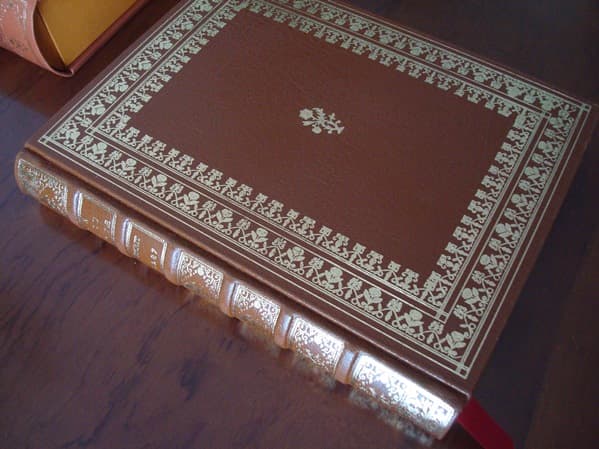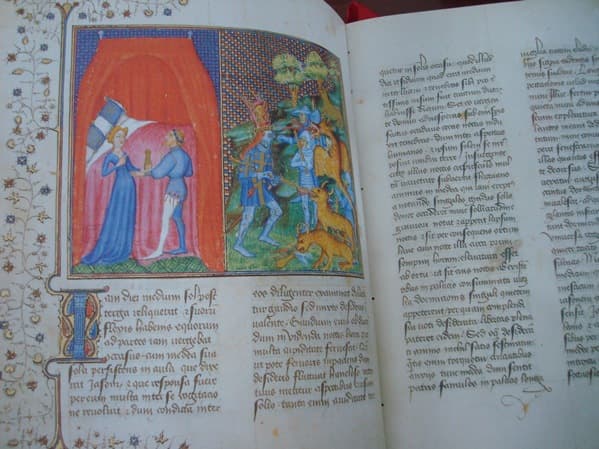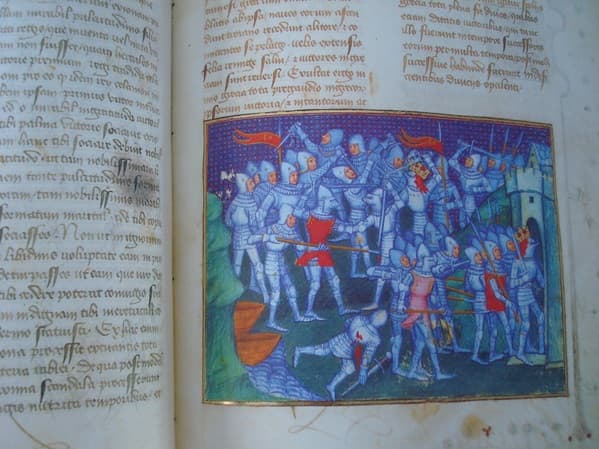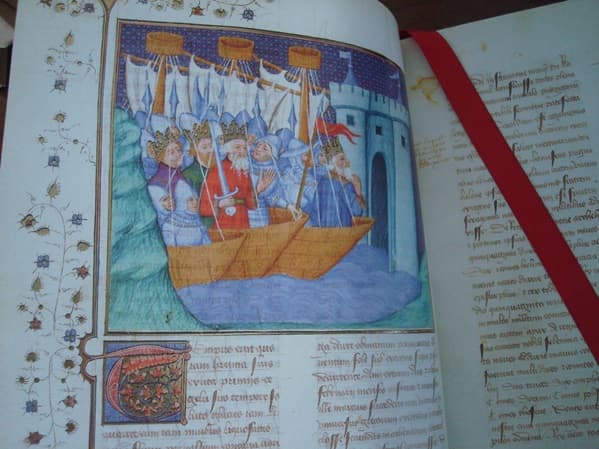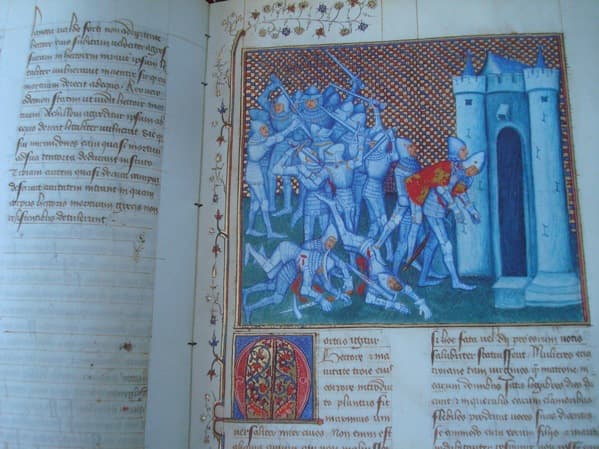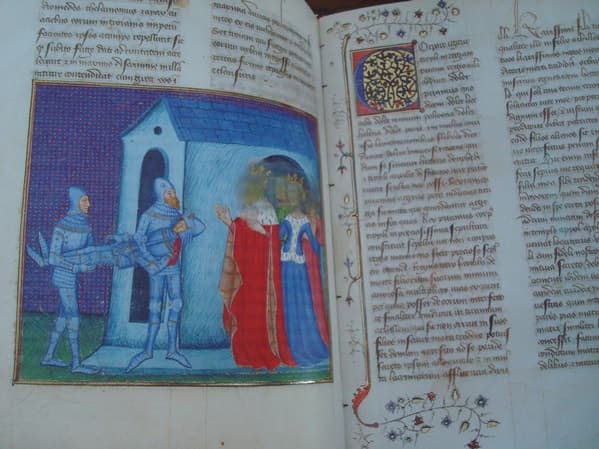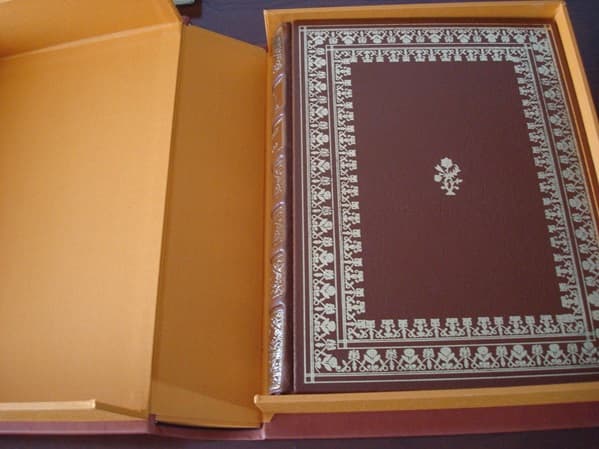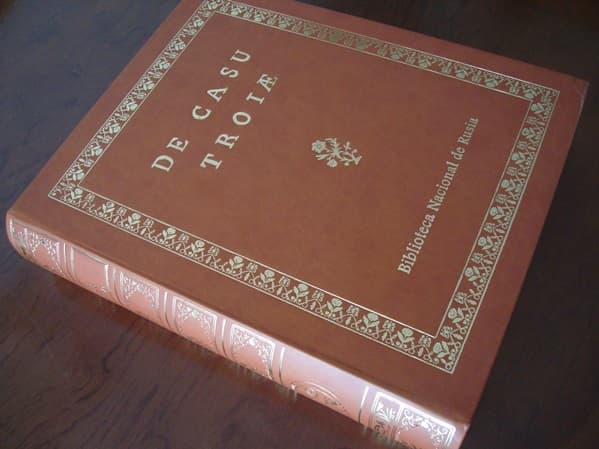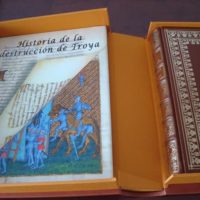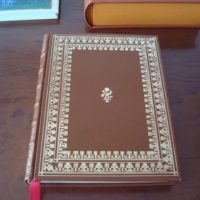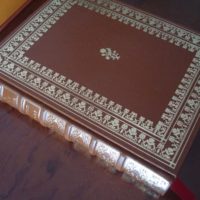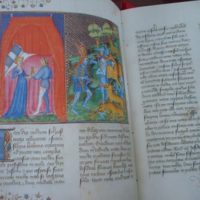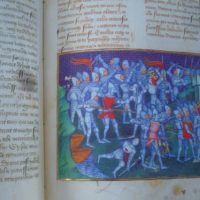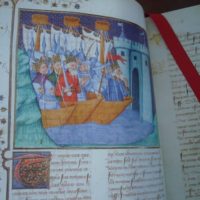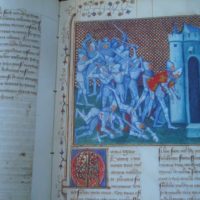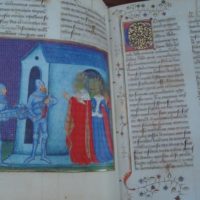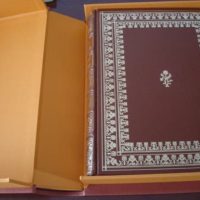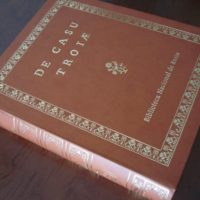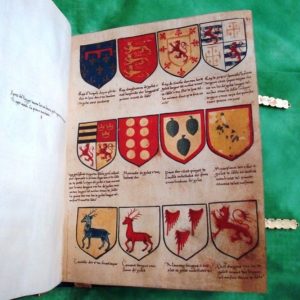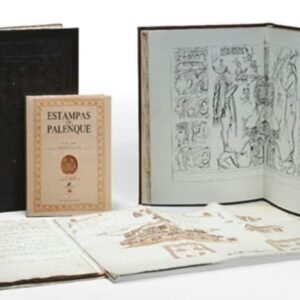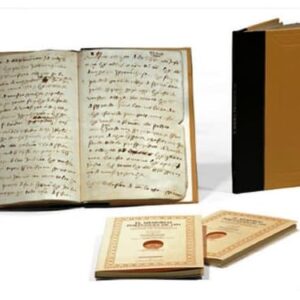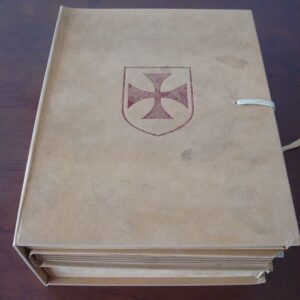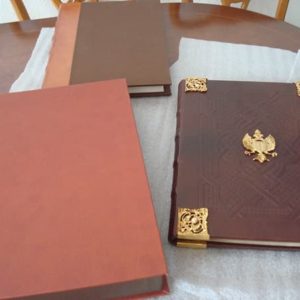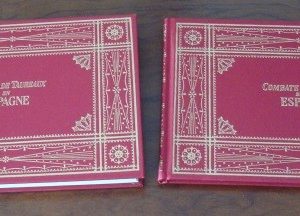Description
Beautiful 2014 facsimile edition of the Lat. F. V. Iv.5 of the early fourteenth century, from the National Library of Russia, History of the Destruction of Troy. Numbered edition, limited to 305 copies and notarized.
Origin: France. Lighting: thirty-five large-format miniatures enriched with gold. Numerous polychrome initials with gold trim.
Facsimile bound in leather with gold prints, ribs, guide tape. Format 24 x 30.5 cm. 312 pages.
Presented in a book case, in leather with gold, rounded spine and fabric interior. Format 29 x 35 x 7.5 cm.
Accompanied by the corresponding hardback bound study book with color illustrated dust jacket. Format 25 x 32 cm. 176 pages including 112 illustrations. Texts in Spanish and German.
Between 1270 and 1287, Guido delle Colonne, Italian lawyer, historian, and poet, wrote a 35-chapter prose version of Latin, abbreviating Benoît de Sainte-Maure’s famous epic about the Trojan War, from the expedition of the Argonauts to Ulysses’ death.
Guido’s language is medieval scholastic Latin, used with a conscious desire for elegance. Homegrown are numerous and sometimes lengthy moral reflections: Christians must not give credence to mythological-legendary accounts or have faith in magic; you should not attend dances or shows …
For a medieval man the materials used in poetry and in history came to be the same; hence, Guido’s work should preferably be classified as “historical chronicle”. The fact that it was written in Latin, an international language, played a decisive role in the dissemination of Guido’s work, which in turn served as a source for other works of authentic literary value, and was in any case considered by the Middle Ages as true anthology of the basic materials referring to the Trojan legend. The popularity of Guido’s work in Europe, especially in the latter part of the fourteenth and fifteenth centuries, far exceeded that of Benoît de Sainte-Maure’s leading poem. Many versions were made and it was translated into different languages. It is worth noting the direct and indirect influence it had on other compositions until well into the 18th century.
Of the 100 surviving manuscripts of Guido’s text, that of the National Library of Russia is characterized by the sumptuousness of its miniatures. Although the miniaturist of the codex is unknown, a great influence of the Italian miniature of the Trecento is appreciated.
The manuscript illustrations are distinguished by their exquisite coloring and the fineness of the drawing. Two clearly differentiated miniaturists execute the miniatures of this wonderful codex. In the numerous scenes of battles that accompany the text of Guido delle Colonne, the intervention of a much more skillful hand is appreciated than in those referring to peaceful subjects. In them, the expression and the intense drama of the fierce battle are tangible.
Until the eighteenth century the avatars of the codex are not known exactly. In the first half of the 18th century, it belonged to Jean-Louis Gaignant, a French bibliophile, as indicated by the inscription on the bookkeeping sheet. Catherine the Great is known to have planned to buy the entire collection from Gaignant in 1769. Possibly it was around this time that one of the Stroganovs bought it. In 1889 it was acquired by the National Library of Russia.
Complete copy and in perfect condition.
Shipping by the buyer, upon request and destination. Ask us any questions and any other fax you are looking for.




